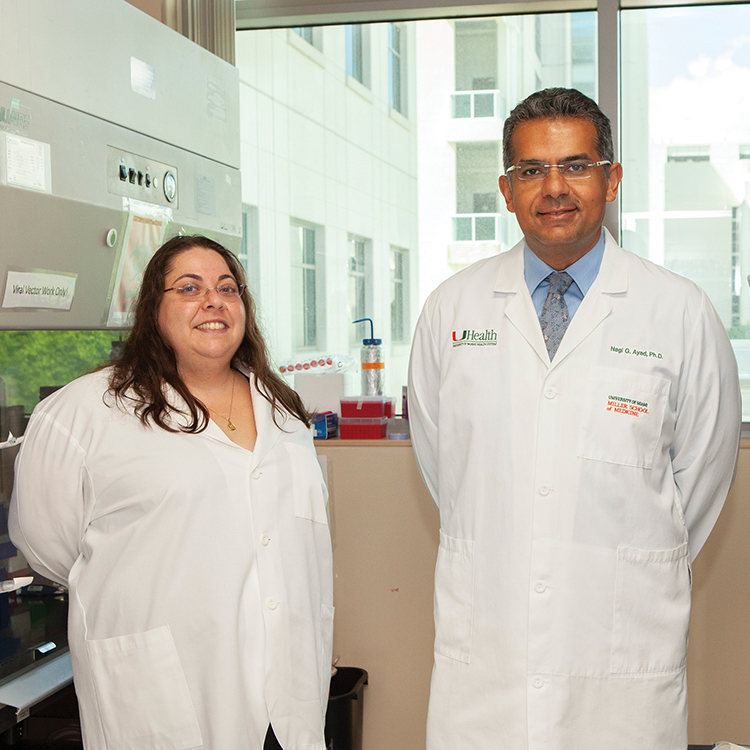A researcher at Sylvester Comprehensive Cancer Center has identified a potential target for halting the unchecked cell division in medulloblastoma, the most common pediatric brain tumor. However, laboratory studies indicate that inhibiting cellular division must be done carefully during a relatively narrow window of time to avoid damage to a child’s still-developing brain.
"Our work has significantly advanced understanding of neurogenesis, the cellular process that results in the creation of new neurons in the cerebellum, the last part of a child’s brain to develop,” said Nagi G. Ayad, Ph.D., a Sylvester member and associate professor of psychiatry and behavioral sciences.

Dr. Ayad is the lead author of a collaborative study with other institutions, “Time Series Modeling of Cell Cycle Exit Identifies Brd4 Dependent Regulation of Cerebellar Neuro-genesis,” published in Nature Communications. Funding was provided by the National Institute of Neurological Disorders and Stroke, Sylvester, and the Miami Project to Cure Paralysis.
Researchers focused on the role of the Brd4 protein in regulating how cerebellar granule cell progenitors (GCPs) divide a certain number of times before differentiating into neurons. “Dysfunction of this process underlies many neurological diseases, including medulloblastoma and ataxia, a degenerative disease of the nervous system,” said Dr. Ayad. “We developed a statistical model identifying the pathways controlling cell cycle exit in GCPs.”
While Brd4 is present during the cellular division process, it is deactivated as the GCPs become neurons, said Dr. Ayad. “By inhibiting Brd4 at the right time, it may be possible to halt the proliferation of brain cells in medulloblastomas,” he added. “However, any potential treatment strategy needs to be done with caution, because children’s brains are still growing and adding new neurons.”
“Our work suggests another potential approach to treating brain cancers in children along with surgery, radiation, and chemotherapy,” said Dr. Ayad.